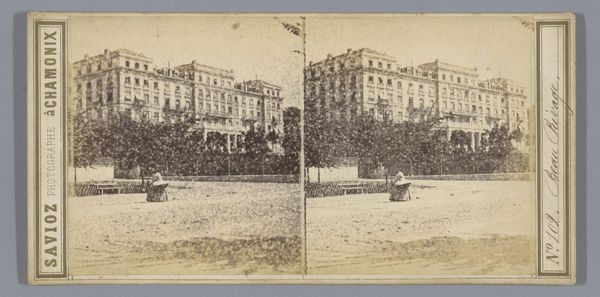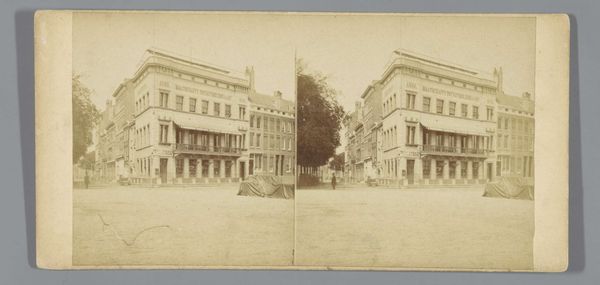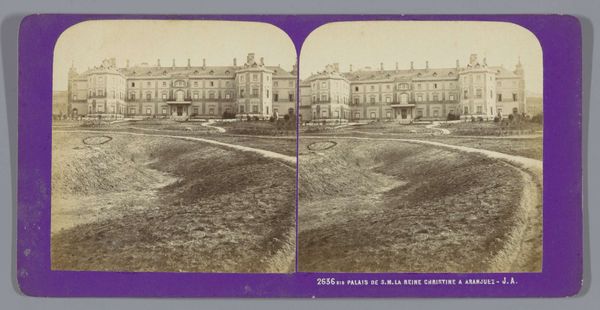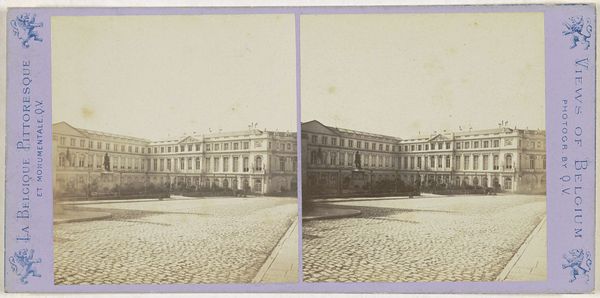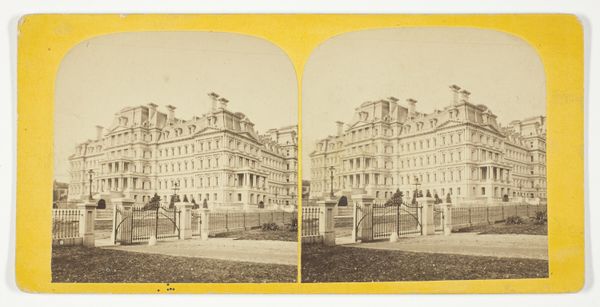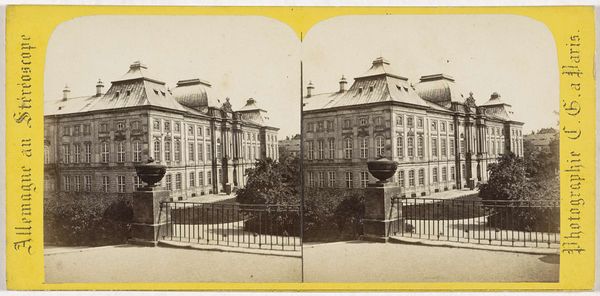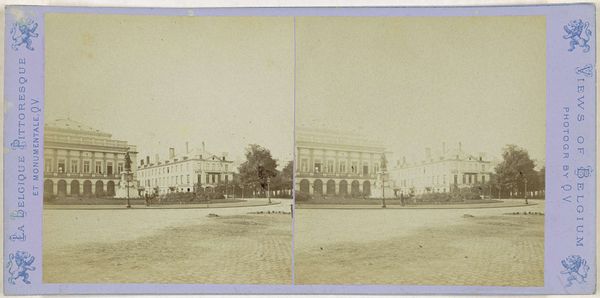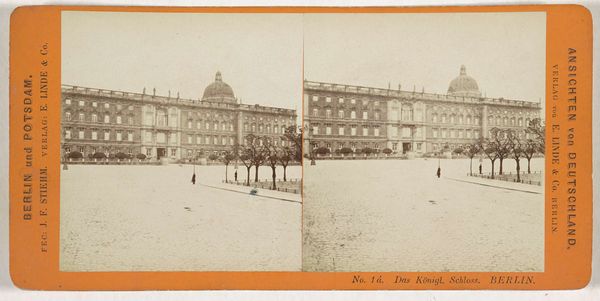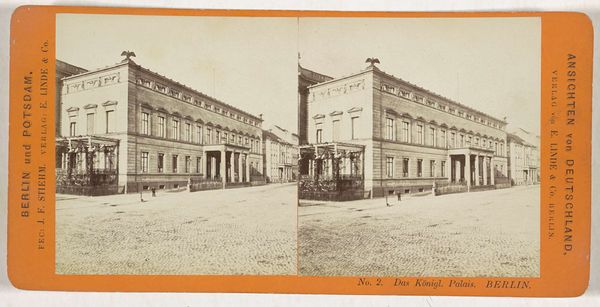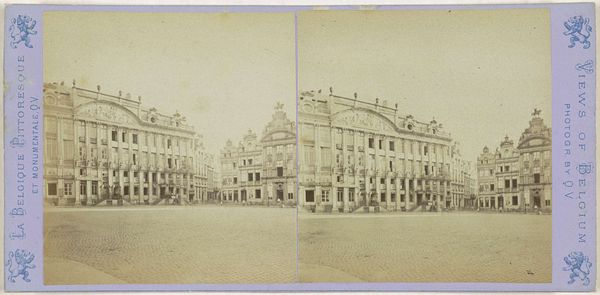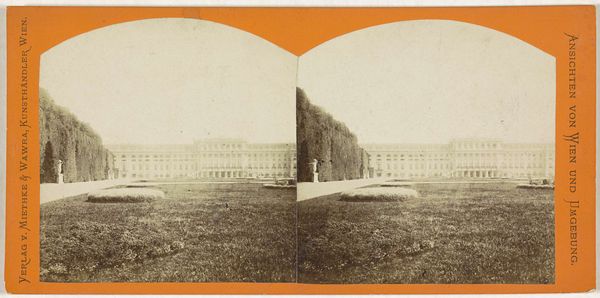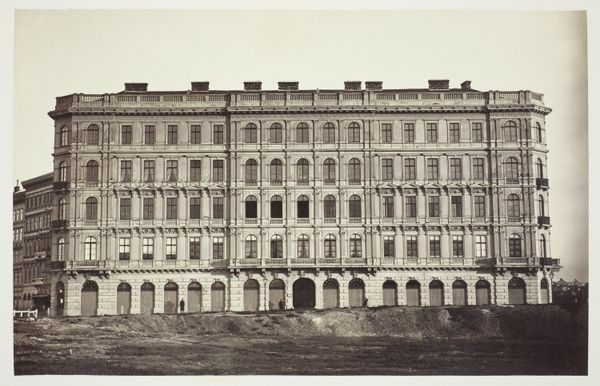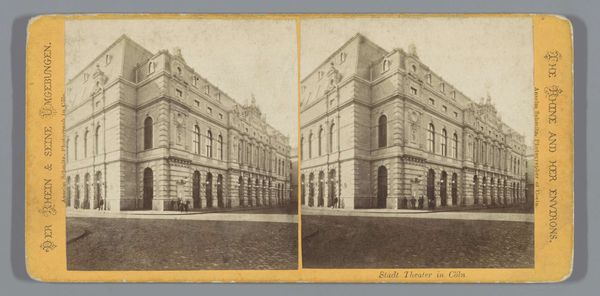
print, daguerreotype, photography
#
water colours
# print
#
daguerreotype
#
photography
#
coloured pencil
#
cityscape
#
realism
Dimensions: height 86 mm, width 177 mm
Copyright: Rijks Museum: Open Domain
Curator: This image captures the Leineschloss, or Royal Palace, in Hanover. It's attributed to Johann Friedrich Stiehm, and the dating places it between 1869 and 1872. It looks to be a stereoscopic print, created through photography, maybe with touches of colored pencil. Editor: It's quite striking, actually. There’s something both grand and strangely subdued about it. The sprawling facade of the palace, framed by that expansive field, projects an air of restrained power. You almost sense the weight of history. Curator: Indeed. Let’s consider how the rigid structure, the strict horizontal lines of the palace architecture, function formally. Notice how Stiehm has positioned the building on the upper third, emphasizing the clear hierarchical order, visually suggesting stability, perhaps even permanence. Editor: Stability yes, but at what cost? The palace stands in stark contrast to what looks like a rather untamed field in the foreground. One wonders about land use, power dynamics. Was this carefully planned green space for the elite, or taken from agricultural uses that pushed poorer communities to the margins? We need to consider what Hanover, Germany, represented at this time. How does the composition invite consideration about social status? Curator: Those questions are certainly valid, but structurally, I am drawn to the repetition of windows and the slightly raised center block. It gives a certain rhythm that contrasts with the seeming naturalism of the meadow. This kind of contrast amplifies the classical elements that can be noticed throughout, like the suggestion of pilasters or a pediment. Editor: Perhaps, and perhaps the apparent visual contrast further enforces societal boundaries. In reality, Germany was undergoing rapid industrialization, urbanization, as well as cultural shifts, during this period. A seemingly natural space in contrast to the industrial spaces cropping up and pushing out working-class residents can lead to other questions around class disparities in cities at this time. Curator: While the piece is not revolutionary from a photographic point of view, Stiehm clearly grasped representational balance to express classical concepts of beauty and hierarchy. Editor: Agreed. There are plenty of historical aspects that create compelling layers to interpret within that carefully balanced photograph. Understanding the society of Hanover at this point brings in some great potential depth to what could otherwise appear a flat image. Curator: Well said, perhaps understanding structure, and context offers the deepest connection of all.
Comments
No comments
Be the first to comment and join the conversation on the ultimate creative platform.
